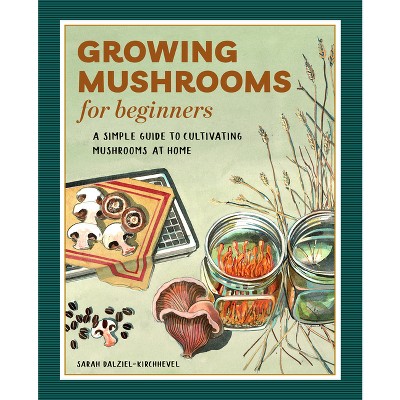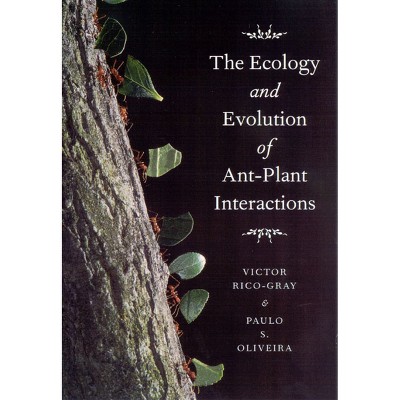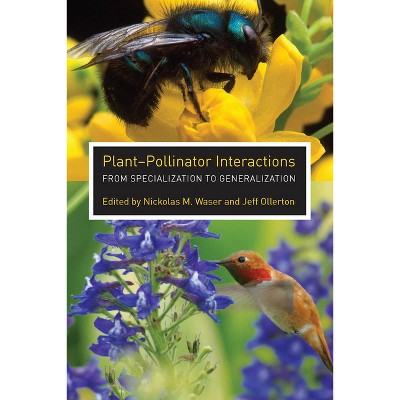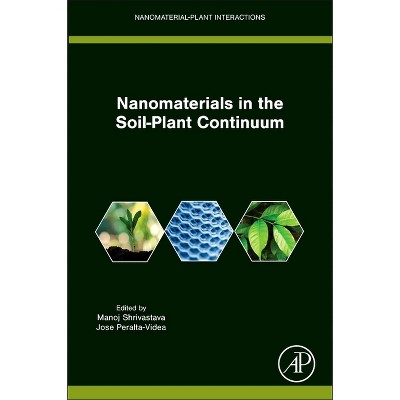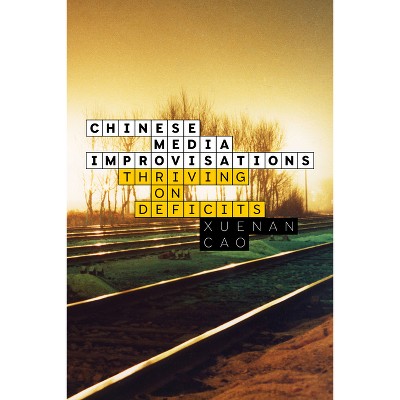Sponsored

Plant Sensing and Communication - (Interspecific Interactions) by Richard Karban (Paperback)
$38.00
In Stock
Eligible for registries and wish lists
Sponsored
About this item
Highlights
- The news that a flowering weed-mousear cress (Arabidopsis thaliana)-can sense the particular chewing noise of its most common caterpillar predator and adjust its chemical defenses in response led to headlines announcing the discovery of the first "hearing" plant.
- About the Author: Richard Karban is professor of entomology and a member of the Center for Population Biology at the University of California, Davis.
- 240 Pages
- Science, Life Sciences
- Series Name: Interspecific Interactions
Description
About the Book
Research is showing that plants are in constant and lively discourse--they communicate, signaling to remote organs within an individual, eavesdropping on neighboring individuals, and exchanging information with other organisms ranging from other plants to microbes to animals. Plants lack central nervous systems, and the mechanisms coordinating plant sensing, behavior, and communication are quite different from the systems that accomplish similar tasks in animals. But they are no less impressive from an evolutionary perspective. In "Plant Communication, "Karban puts an ear to the ground to reveal the world of plant communication and information sensing. He reveals their sensory capabilities, the learning capacity of plants, sensory signaling and communication, the different responses to pollinators and predators, and the mechanisms that undergird this impressive behavioral repertoire. The book shows that plants are hardly the inanimate organisms limited by their stationary existence."Book Synopsis
The news that a flowering weed-mousear cress (Arabidopsis thaliana)-can sense the particular chewing noise of its most common caterpillar predator and adjust its chemical defenses in response led to headlines announcing the discovery of the first "hearing" plant. As plants lack central nervous systems (and, indeed, ears), the mechanisms behind this "hearing" are unquestionably very different from those of our own acoustic sense, but the misleading headlines point to an overlooked truth: plants do in fact perceive environmental cues and respond rapidly to them by changing their chemical, morphological, and behavioral traits. In Plant Sensing and Communication, Richard Karban provides the first comprehensive overview of what is known about how plants perceive their environments, communicate those perceptions, and learn. Facing many of the same challenges as animals, plants have developed many similar capabilities: they sense light, chemicals, mechanical stimulation, temperature, electricity, and sound. Moreover, prior experiences have lasting impacts on sensitivity and response to cues; plants, in essence, have memory. Nor are their senses limited to the processes of an individual plant: plants eavesdrop on the cues and behaviors of neighbors and-for example, through flowers and fruits-exchange information with other types of organisms. Far from inanimate organisms limited by their stationary existence, plants, this book makes unquestionably clear, are in constant and lively discourse.Review Quotes
"Effective because it sweeps across so many aspects of plant biology, and ecology and evolutionary biology more generally, Plant Sensing and Communication is also very well written, easy to digest, and feels like an unrushed synthesis. Certain signature aspects of Karban's clarity shine through in this book. For example, the dichotomous keys to, and categorization of, certain types of interactions are a hallmark of Karban's ability to simplify and clarify, and these will be useful to readers for decades (even if they disagree). This book will be read widely and have a lasting impact."--Anurag Agrawal, Cornell University "coeditor of "Induced Plant Defenses Against Pathogens and Herbivores""
"Karban seeks to argue that plants behave--that they sense their environment, detect and communicate with an array of different organisms, and respond to their sense of the environment and communication. He is very successful in this, demonstrating that plant sensing and communication is a vibrant area of current research with still plenty more to discover. Very unusual, with broad appeal, so timely and well written, this book will be essential reading for specialists and a landmark in the field. Plant Sensing and Communication is a fantastic book."--Graeme D. Ruxton, University of St Andrews, UK "coauthor of "Experimental Design for the Life Sciences" and "Plant-Animal Communication""
"Richard Karban gives an introduction to a secret world: the multiple ways via which plants obtain information on their environment. Plants identify microbes and animals with which they are in contact, distinguish friends from foes, perceive the presence and degree of attack of their plant neighbors. They successfully integrate all this information and respond with adequate behaviors to enhance their chances of survival end reproduction. Reports on talking trees and intelligent plant behavior make it regularly into the public press, but they frequently leave the impression that botanists humanize their study objects, perhaps to make them more attractive for the public. In Plant Sensing and Communication, Karban carefully avoids this pitfall and provides us with detailed descriptions of all the physiological mechanisms that enable plants to gain information on their environment, make optimal use of the resources available, and actively manipulate their biotic environment for their own benefits."--Martin Heil, Cinvestav Unidad Irapuato, Mexico
"A wonderful book; not least because it is a celebration. A celebration of the exquisite sensory capabilities of plants, and an exploration of their capacity to communicate with other entities. How refreshing it is to live on a planet where our green neighbours have such extraordinary talents. And how thrilling is it that humans--if they try hard enough and aren't blinded by notions of zoosupremacy--have the capacity to appreciate, explore, and understand that side of those resourceful organisms with whom we share the planet. Even if some humans still remain resolutely plant-blind, it is clear that plants themselves are anything but blind; they see their environment extremely clearly and with great acuity. Now, if only we could all see plants in the same way . . ."--Nigel Chaffey, Bath Spa University, UK "Annals of Botany Blog: News and Views on Plant Science and Ecology"
"Karban . . . largely avoids political melodrama, instead providing clear working definitions of some of the contentious vocabulary: communication, eavesdropping, learning and memory. His summaries of plants' sensory abilities--such as the cues and signals that they use to adjust to the environment--retain an evolutionary perspective. And he branches out into areas such as mate choice, for example detailing how plants selectively breed with specific fathers represented in a mixed pollen load."--Ian T. Baldwin, Max Planck Institute for Chemical Ecology "Nature"
"Plants are smart, . . . but to notice we have to overcome our ingrained cultural biases. . . . Clearly, we will never play chess with a rose, nor ask the orchid on our windowsill for advice. But that is the point: humans are guilty of serious parochialism, of defining intelligence in terms of a nervous system and muscle-based speed that enables things to be done fast. . . . Plants . . . are highly responsive, attuned to gravity, grains of sand, sunlight, starlight, the footfalls of tiny insects, and to slow rhythms outside our range. They are subtle, aware, strategic beings whose lives involve an environmental sensitivity very distant from the simple flower and seed factories of popular imagination. . . . . Plant Sensing and Communication [is a] timely, highly accessible summar[y] of fast-developing fields. . . . [It] combine[s] a passion for plants and a desire to illustrate their largely unsung complexities with an appreciation of the burden of proof needed to persuade us of a world that contains chlorophyllic sentience."--Adrian Barnett "New Scientist"
"Sensational headlines about plant communication have appeared in newspapers in recent years. In this work, however, Karban has written a basic outline of plant sensing and communication drawn from extensive research in botany, ecology, and agriculture. . . . Recommended."--J. Cummings, Washington State University "Choice"
About the Author
Richard Karban is professor of entomology and a member of the Center for Population Biology at the University of California, Davis. He is coauthor of Induced Responses to Herbivory, also published by the University of Chicago Press, and How to Do Ecology: A Concise Handbook.Dimensions (Overall): 8.9 Inches (H) x 6.0 Inches (W) x .7 Inches (D)
Weight: .7 Pounds
Suggested Age: 22 Years and Up
Number of Pages: 240
Genre: Science
Sub-Genre: Life Sciences
Series Title: Interspecific Interactions
Publisher: University of Chicago Press
Theme: Botany
Format: Paperback
Author: Richard Karban
Language: English
Street Date: June 30, 2015
TCIN: 1006093292
UPC: 9780226264707
Item Number (DPCI): 247-33-3887
Origin: Made in the USA or Imported
If the item details aren’t accurate or complete, we want to know about it.
Shipping details
Estimated ship dimensions: 0.7 inches length x 6 inches width x 8.9 inches height
Estimated ship weight: 0.7 pounds
We regret that this item cannot be shipped to PO Boxes.
This item cannot be shipped to the following locations: American Samoa (see also separate entry under AS), Guam (see also separate entry under GU), Northern Mariana Islands, Puerto Rico (see also separate entry under PR), United States Minor Outlying Islands, Virgin Islands, U.S., APO/FPO
Return details
This item can be returned to any Target store or Target.com.
This item must be returned within 90 days of the date it was purchased in store, shipped, delivered by a Shipt shopper, or made ready for pickup.
See the return policy for complete information.
Frequently bought together
Trending Non-Fiction


$18.28
was $19.58 New lower price
4.7 out of 5 stars with 17 ratings




